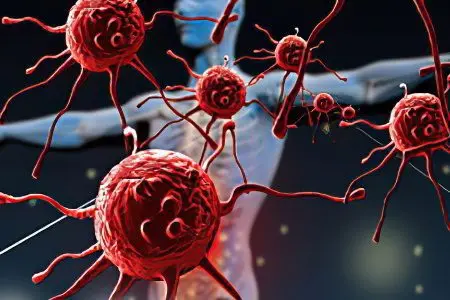Contents

For the first time this disease was described in 1883 by the Parisian dermatovenereologist J. A. Fournier. He observed how several healthy young men developed rapidly progressive gangrene of the penis and scrotum. This disease is defined as polymicrobial necrotizing fasciitis of the perineum and perianal region. This disease is most common in older men, although it can be diagnosed at any age. Very rarely, Fournier gangrene occurs in women.
Due to the rarity of the pathology, it has not been studied well enough, and data on it in the medical literature can be contradictory. Previously, it was believed that gangrene occurs as a result of injury; at present, the introduction of an endogenous or exogenous infection is not excluded. Its spread is promoted by diseases of the genitourinary system or the lower intestine.
Forms of infection based on the localization of the disease and the causes of its occurrence:
Anorectal form – occurs as a result of anal fissures, purulent inflammation of the lower intestines, perforation of the rectum, and also as a complication of colorectal cancer or trauma to this section of the gastrointestinal tract;
Urogenital form – occurs due to infection of the genitourinary tract and skin of the genital organs, injuries of the urethra (with long-term catheterization).
Other causes of Fournier’s gangrene:
Genital piercing;
Injections into the penis;
steroid enemas;
Superficial damage to the genital organs;
Foreign body in the rectum.
The localization of the disease is due to the structural features of the corresponding area of the human body. The epithelium of the vulva and perineum is very loose, as is the adipose tissue of the subcutaneous tissue. The skin of this area contains many sweat and sebaceous glands, hair follicles.
The scrotum and the anal region are supplied with a dense network of veins and a small number of arteries. With inflammation in this place, blood flow slows down, which further worsens the blood circulation of tissues. Ischemia spreads through the fascia, causing gangrene of the skin. The membranes of the scrotum become necrotic, edema and microabscesses appear in them.
Any disease or condition that reduces the level of general immunity exacerbates the risk of Fournier’s gangrene.
Increased risk factors:
Alcoholism;
Cirrhosis of the liver;
HIV infection;
Violation of blood circulation in the pelvic organs;
Obesity;
Diabetes;
Taking glucocorticosteroids;
Malignant tumors;
chemotherapy sessions;
Malnutrition;
Addiction;
Crohn’s disease.
Clinical manifestations

The wider the volume of damaged tissues, the more severe the manifestations of the disease.
The most striking of them are the symptoms of intoxication:
Weakness;
fatigue;
Fever;
Chills;
Headache.
Additionally, palpitations, arterial hypotension can be diagnosed.
Local symptoms of Fournier’s gangrene:
The appearance of ulcers on the skin of the scrotum and on the penis;
Hyperemia, edema, itching;
tissue necrosis;
Bad smell from the wound;
Difficulty urinating;
Pain syndrome;
Isolation of gas bubbles, pus from the wound.
The duration of the disease does not exceed 5-8 days, although cases of a fulminant course of the disease are described in medical practice. With the development of the clinical picture of Fournier’s gangrene, the tissues of the scrotum and the area near the anus become black. When they are palpated, crepitus appears (crunchy sound). This symptom signals the death of the tissues of the genital organs. Inflammation can spread to the inner thighs, groin area and lower abdomen.
Diagnosis of Fournier’s gangrene

To diagnose the disease, you should contact a urologist. In the early stages, the doctor can only detect edema and hyperemia of the genital organs; at the late stage of gangrene formation, a crunch and symptoms of intoxication are recorded. Symptoms of Fournier’s gangrene are differentiated from urological diseases and other pathologies.
Diseases with similar manifestations:
syphilis;
Chancroid;
Balanitis of a patient with diabetes mellitus;
Gangrenous balanitis;
Inguinal lymphogranulomatosis;
Gangrenous diabetic vulvitis and acute vulvar ulcers in women.
Laboratory and instrumental studies:
General analysis of blood and urine for the presence of leukocytes, ESR;
Blood test for clotting;
Blood test to determine the level of gases;
Analysis for disseminated intravascular coagulation;
X-ray of the pelvic organs;
Bacteriological examination of blood and urine;
Ultrasound of the testicles – allows you to exclude urological pathologies.
If necessary, a histological examination of the tissues of the affected area is performed.
Histological signs of gangrene:
Fascia necrosis;
Thrombosis of the vessels of the fascia;
Coagulation of fibrin in the lumen of blood vessels;
Signs of bacterial infection of tissues;
Detritus;
tissue infiltration.
Conservative therapy and surgery

Treatment of patients with such a diagnosis takes place in the surgical department, in the intensive care unit. The main direction of treatment is drug therapy with the use of antibiotics.
Preparations for monotherapy and combined treatment:
Carbapenems;
protected penicillins;
Clindamycin + Ciprofloxacin;
Cephalosporin + Metronidazole.
At the same time, the patient is being prepared for surgery. The surgeon during the operation excised tissue affected by gangrene.
Stages of the operation:
Skin incision in the groin area;
Removal of necrotic tissue with the capture of intact areas.
Purification of tissues from pus;
Antiseptic treatment of the cavity of the scrotum and peritoneum;
Pumping out exudate;
Sewing up the surgical wound.
Most often it is not possible to do with one operation, there is a need for plastic surgery of the genitals. For this, autodermoplasty, muscle and stalked plastics and other modern methods of reconstruction are used. Excision of a large area can lead to swelling of the penis due to impaired lymph circulation.
Prognosis of the condition of patients after treatment
After therapy, scars remain at the site of gangrenous manifestations, and the genitals can be severely deformed. If the surgical intervention is carried out at an early stage, the regeneration of the scrotum occurs very quickly. The presence of genital scarring can make erections painful. Such manifestations are observed in half of the men who have undergone such treatment. Lethal outcome, according to medical statistics, is recorded in 7-45% of cases of diseases, the treatment of which began too late.
Insufficient knowledge of the pathology and an uncertain prognosis with many complications makes Fournier’s gangrene a very dangerous disease.










السلام عليكم
ماذا بعد الخروج من المشفى هل يوجد مراجعة الطبيب؟